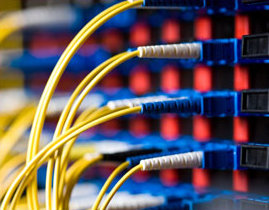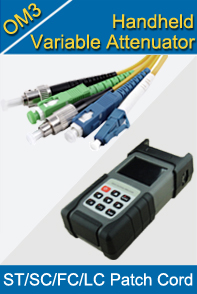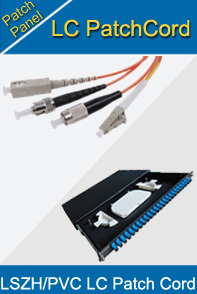-

- Sopto Home
-

- Special Topic
-

- Patch Cord Knowledge
-

- Selecting a Fiber Optic Patch Cord
Patch Cord Knowledge
- Fiber Optic Connector Ferrule Design
- Fiber Optic Connector Design
- E2000 to ST Fiber Patch Cable Overview
- Acceptable and Unacceptable Fiber Connector End-Face Finishes
- Using Wipes and Cleaning Cassettes to Clean Fiber Patch Cords
- Not-Too-Tight Mating of Fiber Optic Connectors
- Matching Gel and Oils Contamination about Fiber Optic Connectors
- The Effect of Improper Use of Fiber Optic Connectors
- Why Fiber Optic Connectors are Fragile?
SOPTO Special Topic
Certificate



Guarantee
Except products belongs to Bargain Shop section, all products are warranted by SOPTO only to purchasers for resale or for use in business or original equipment manufacturer, against defects in workmanship or materials under normal use (consumables, normal tear and wear excluded) for one year after date of purchase from SOPTO, unless otherwise stated...
Return Policies
Defective products will be accepted for exchange, at our discretion, within 14 days from receipt. Buyer might be requested to return the defective products to SOPTO for verification or authorized service location, as SOPTO designated, shipping costs prepaid. .....
Applications
 Fiber Patch Cords have a widely application. Where the need for the optical fiber connection, where you need fiber optic patch cords.
Fiber Patch Cords have a widely application. Where the need for the optical fiber connection, where you need fiber optic patch cords.
Testing Equipment
FTTX+ LAN
Optical Fiber CATV
Optical Communication System
Telecommunication
SOPTO Products
- Fiber Optic Transceiver Module
- High Speed Cable
- Fiber Optical Cable
- Fiber Optical Patch Cords
- Splitter CWDM DWDM
- PON Solution
- FTTH Box ODF Closure
- PCI-E Network Card
- Network Cables
- Fiber Optical Adapter
- Fiber Optical Attenuator
- Fiber Media Converter
- PDH Multiplexers
- Protocol Converter
- Digital Video Multiplexer
- Fiber Optical Tools
- Compatible
Related Products
Performance Feature
Good Water-proof
Low insertion loss;
low reflection loss;
Stability, good repeatability;
High-precision ceramic ferrule;
Compatible with NTT standard;
Precision Grinding and fully testing;
Compliance with international standards
Patch Cord Knowledge
Recommended


Selecting a Fiber Optic Patch Cord
Sopto receive many questions when it comes to the topic of Networks and Datacom, but one subject Sopto believe many can benefit from is how to determine the differences between one fiber optic patch cord and another. Now, fiber optic patch cords come in a variety of cable and connector types. In order to obtain the proper patch cord you need to determine several attributes:
Cable Type — Fiber Optic cable comes in two general types, Single-Mode and Multi-Mode fiber.
- Single-Mode fiber cable generally has a 9 Micron diameter glass fiber. There are two sub groups (referred to as OS1 and OS2) but most cable is "dual rated" to cover both classifications.
-
Multi-Mode fiber cable can have several different diameters and classifications of fiber strands.
- The two diameters currently in use are 62.5 Micron and 50 Micron.
- Thinner diameters (1.6 or 2mm) may be preferable in dense installation within a single rack since they take up less space and are more flexible. Cables that route from rack to rack (especially via cable tray) may be more suitable if they have the thicker jacket that results in larger diameters thus making them more rigid.
- Flammability of the jacket material could become an issue if the area they are in has special requirements for flame spread or products of combustion in case of a fire. In these cases, patch cords may have to be classified as "Plenum Rated" (OFNP) rather than "Riser Rated" (OFNR).
Simplex or Duplex — Unlike copper patch cords which send information in both directions (having multiple pairs of conductors with which to do so), most fiber patch cord cables have a single strand of fiber allowing for signal flow in one direction only.
Connecting equipment so that it can send and receive information requires two strands of fiber (one to transmit and one to receive information). This can be accommodated by using two "Simplex" (single strand of fiber) cables for each equipment interconnection or a "Duplex" cable, with conductors and/or connectors bonded together in pairs.
Length — Overall length of the patch cord may be specified in feet or meters, depending on your preference.
Connector Type — See the connector type descriptions below. Some patch cords may have different connector types on each end to accommodate interconnection of devices with dissimilar connectors. In some cases, there may be a connector on only one end, and bare or unterminated fiber on the other. These are usually referred to as "Pigtails" rather than "Patch Cords".
.png)
Different Types of Cable Connectors
.png)
MTP or MPO Cable Connector and MT-RJ Cable Connector
Sopto hope this post was helpful in answering any questions you might have. If you are interested in requesting a Fiber Optic Patch Cord, please provide the following information when making the request:
- Connector Type (each end)
- Fiber Type
- Single-Mode or Multi-Mode
- Diameter in Microns (e.g. 50 or 62.5)
- Classification (OM1, OM2, OM3, or OM4)
- Jacket
- Diameter (in Millimeters)
- Flammability (OFNR or OFNP)
- Color
- Length
- Simplex or Duplex
For the newest quotes, please contact a Sopto representative by calling 86-755-36946668, or by sending an email to info@sopto.com. For more info, please browse our website.




